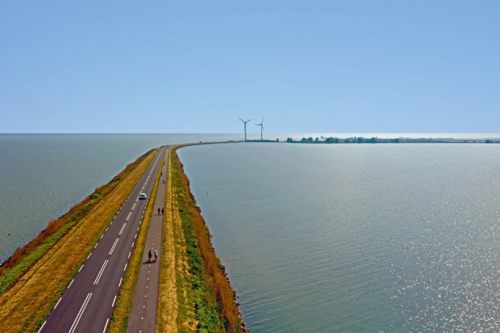
Changes in weather patterns are one of the principal effects of climate change. We are now seeing more extreme weather conditions. This has a huge impact on vulnerable communities living in low lying areas, who suffer change to land use on a massive scale when exposed to environmental risks such as flooding.
In these cases, water needs to be kept within certain bounds. Sea defense dikes, flood alleviation emergency dikes, canal dikes, and all manner of streams and channels are an important element of land protection to allow for irrigation or navigation. Indeed, longitudinal dikes are one of the most often used structures designed and constructed to keep river water contained in the event of a flood.
In recent decades, several major flood events have shown the vulnerability of flood protection structures around the world. Frequently, the overtopping of flood protection dikes has led to the total failure of the structure. Plus, river dikes affected by previous incidents were often too low, or in too poor condition to resist water height and erosion during a flood. The aftermath of disastrous flood events has shown that dikes are an important part of a society’s infrastructure and must be designed with maximum safety in mind.
Dikes are often constructed from a variety of locally available materials; local soils are the most cost-effective construction source. However, this material often varies, and its permeability can be equally mixed. Surface erosion is often prevented using quarried rock armor, which must be placed with other soils in graded layers to prevent loss of finer soil particles. The correct stone grades are often difficult to source and place.
Geosynthetics can be used to improve dikes with state-of-the-art design. Geosynthetic solutions, used in combination with natural materials, have proven to provide:
- Strength and flexibility
- Imperviousness and drainage
- Durability and robustness
- Degradation control
These technologies bring not just structural defense but buy more time for evaluating risk and providing emergency response to at-risk communities. They can be designed to control the interaction of water and soil according to individual and local requirements, including to allow for the optimum construction of waterways and flood protection structures.
There is not always enough space to make the required stable dike profile solely of soil, for example, when buildings, watercourses or other obstacles are expensive or impossible to move. In this case, geosynthetics can be used to increase the stability of the dike or to increase its slope angle and, thus, reduce its footprint.
Geosynthetic drainage systems can reduce groundwater pressure in the structure and allow the soil to retain more strength. Geosynthetic barriers can replace thick natural low permeability soil (like clays) with significantly thinner layers, thus reducing the footprint of the structure and increasing its impermeability.
Adding resilience to flood protection structures is critical to future risk mitigation. However, building higher and stronger structures to prevent overtopping waves, storm surge and floodwaters can be costly. The optimization of dike construction with geosynthetics to increase their resilience not only results in performance advantages, but also in large cost savings.
This article originally appeared on the International Geosynthetics Society website, www.geosyntheticssociety.org.
 TEXTILES.ORG
TEXTILES.ORG


